Location
This private memorial stone is now situated immediately to the right on entering the side door to the church.
Description
The stone is severly weathered such that the inscription cannot be read. A transcription of the original text appears above it.
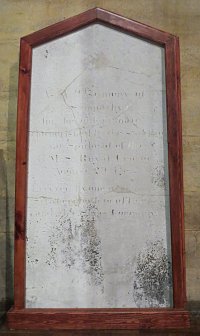
The Royal George Capsizes
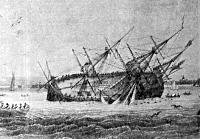
James Hay Memorial
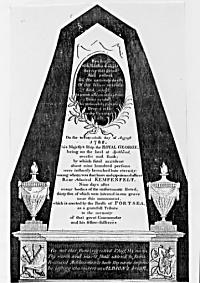
1962 Photograph
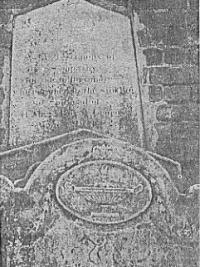
Celtic Cross 1962/1990
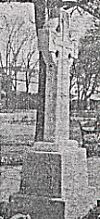
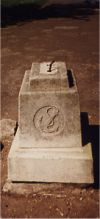
AUGUST 29TH 1782
ERECTED BY ONE WHO WAS A STRANGER BOTH TO OFFICERS AND THE SHIPS COMPANY
Further Information
[From an explanation adjacent to the headstone]
'On the morning of 29th of August 1782, the flagship 'Royal George' and 'Victory' were amongst the grand fleet of 36 battleships at anchor in the Solent, loading final stores, before sailing under Lord Howe for the relief of Gibraltar.
Beside the 800 crew there were also on board about 400 Portsmouth visitors, which included 360 women and children saying their farewells.
The cutter 'Lark' was loading barrels of rum aboard through the lower gun ports, when the 'Royal George, which was leaning to port, undergoing minor underwater repairs, suddenly keeled over, capsized and sank, with the tragic loss of over 900 lives, which included the illustrious Rear Admiral Richard Kempenfelt, many officers, seamen, marines and nearly all the civilians.
Only 11 women and one child survived the disaster. 35 bodies were buried in one grave in the St Mary's graveyard.'
The Memorials
The private memorial mentioned above stood in the graveyard from shortly after the event until 1973 when it was taken away for restoration and then forgotten. Thanks to the efforts of John Bartlam, the stone was located in a Hilsea depot in 1992 and restored to the church. This was not however the only memorial to the event.
A more elaborate memorial, probably funded by public subscription, was also erected within a year of the disaster. This memorial, designed by James Hay, was described by the Hampshire Chronicle on 28th April 1783 as '..that elegant and lofty pyramidical monument erected over the large grave and surrounded by iron railings'. The paper went on to refer readers to an illustration of the memorial in the Gentlemen's Magazine of May 1783 (see our copy on the left).
The extract from the Hampshire Chronicle slightly contradicts the inscription on the memorial itself which referred to the 'thirty-five (who) were interred in one grave near this monument'. There is now no clear evidence of the exact relationship between the two memorials and the mass grave itself, though there is a reference to the larger memorial being in the South-East corner of what was then known as Kingston Graveyard.
In 1935, the graveyard at St Mary's was converted into the public garden we see today. There are several references in the Council and Church records of that time to a discussion about replacing a memorial to the Royal George which had deteriorated to the point that it was almost illegible. It is not clear however to which memorial they refer.
A letter written by the Bishop on March 9th 1935 speaks of a stone built into the wall which he suggests should be buried under a replacement memorial, however, a photograph published in the Evening News on 27th April 1962 clearly shows the private memorial still in place in the wall.
Further records confirm that a replacement was erected in 1935 and this was in the form of a Celtic Cross. The memorial was damaged by vandals at some later date and removed, leaving behind only a plinth. Evidence is available to show that the proposed inscription on this memorial included the wording, "The original Royal George Memorial Stone, owing to it's dilapidated condition, was removed from the South-East corner when the churchyard was made into a rest garden in 1935". Since the private memorial was not removed in 1935, this can only refer to the James Hay memorial, which therefore may have been buried under the Cross.
Other Memorials to the Royal George
There are at least three other memorials that still exist. Two are in Ryde on the Isle of Wight, one is between the Esplanade and Monkton Street South, in a small public garden; the second on the Esplanade itself. The third is a large marble monument to Richard Kempenfelt and the Royal George in Westminster Abbey.
[Special thanks to John Bartlam and Cynthia Sherwood for their invaluable research]
The Wreck of the Royal George
Much salvage work was carried out on the Royal George, principally by the Deane Brothers in 1834-36. They were responsible for raising one of the guns from the Royal George which is now on display at Southsea Castle. The wreck did not feature in the records again until she was rediscovered by Alexander McKee during his search for the Mary Rose in 1965. Because of the explosives used on the ship and the passage of time what is left is more accurately described as a burial mound, though McKee did recover some artefacts.
